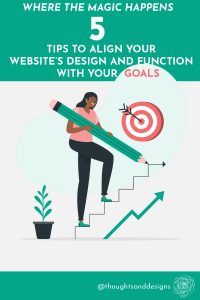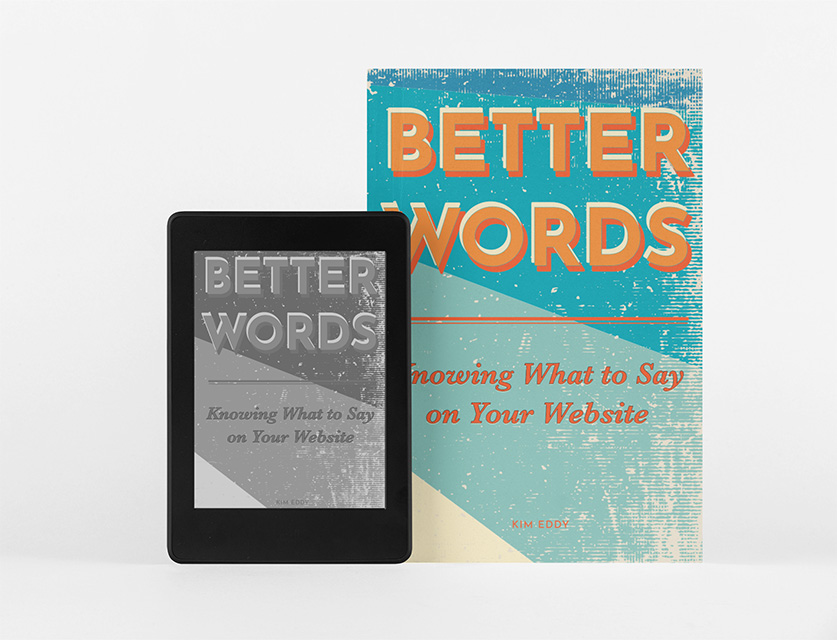When it comes to business websites, your business goals matter. Successful website design is more than just opening up some website builder and throwing a few widgets on the page. The real magic happens when you start with your goals, and create the design and function of your website around those business goals.
Imagine you’re trying to get somewhere you’ve never been before. You wouldn’t just hop in the first car you see and start driving, right? You’d choose a vehicle that could handle the terrain, program the GPS with your destination, and maybe even check traffic reports to optimize your route.
Your website is no different. It’s your vehicle for reaching your business goals, and just like a road trip, it needs to be well-equipped and directed to get you where you want to go. That’s where aligning your website’s design and function with your goals comes in.
Why is aligning web design with business goals so important for SEO?
Search engines are getting smarter. They’re not just looking for keywords anymore; they’re looking for websites that provide a relevant, valuable, and user-friendly experience.
When your website is aligned with your goals, it naturally becomes more user-friendly and relevant to your target audience. This, in turn, leads to better search engine rankings and more organic traffic.
So, how do you actually achieve this alignment of goals and design?
1. Start by Defining your business goals.
What do you want your website to achieve? More sales? More leads? Brand awareness? Increased engagement? Get specific!
The more specific your goals, the easier it will be to design and tailor your website to achieve them.
Keep in mind the principles of SMART goals, though, and focus on things you can control. You cannot control exactly how much traffic you’ll get but you can control setting up your website for better visibility and to engage your visitors.
SMART goals, in case you need a refresher, are Specific, Measurable, Attainable, Relevant, and Time-Bound. In this situation, you’ll need to decide how you you’re going to measure these business goals (for example, using Google Analytics), and what is and isn’t attainable by your efforts alone.
2. Next, consider your target audience and their goals.
Who are you trying to reach with your website? What are their needs? The first time someone is searching for a site like yours, what are they trying to accomplish? How can you help them with this task?
Once you know your audience, you can create content and design elements that resonate with them.
Our business goals and our customer’s goals are not at odds with each other. We can both win here.
When I was redoing my own website, I met with different clients and people in my target audience over Zoom and found out more about what they were curious about concerning websites, marketing, and growing a business. These discussions were super helpful. Too often we’re so close to our zone of genius we don’t know what others struggle with.
So, get out there and talk to real people during the planning.
3. Choose the right platform and tools to achieve your business goals.
Not all website platforms are created equal. Choose one that is flexible and scalable, and that has the features you need to achieve your goals.
My own preference is WordPress (and I only exclusively work in WordPress) but I know others swear by Squarespace or Shopify, depending on the niche, so do your research.
I will add that there is something to be said for just diving in, and developing a baseline when you’re just getting started. If you are on a limited budget, starting with whatever you can start with is better than trapping yourself in an endless cycle of research.
At the very least, install Google Analytics on whatever site you start with, so you can track behavior on your site. Learn what people are searching for, and what they like most on your site. This will help you with your next iterations of your website as you grow.
4. Make your design choices with purpose.
Every element of your website, from the layout to the color scheme to the call to action buttons, should have a purpose. Make sure everything is designed to guide your users towards your goals (and theirs).
Create content and design that helps them complete the tasks they are coming to your site to do, whether that’s conducting research or making a purchase. Don’t make things too complicated for your visitors by adding unnecessary extras to your site (sliders, animations, etc.)
Always start with your content first, so you can design your website around your message. Design is meant to amplify your message. It should never be something pretty to dump words into.
5. Prioritize user experience.
Your website should be easy to navigate, visually appealing, and mobile-friendly. If users have a difficult time finding what they’re looking for, they’ll bounce and head to your competitor’s site.
Remember: The Confused Mind Says No!
Finally, continuously track and optimize to keep growing towards your business goals.

Websites are never “one and done”. Once your website is launched, it’s important to track your results and make adjustments as needed. Use analytics tools to see what’s working and what’s not, and experiment with different design and content elements to find what resonates best with your audience.
When you first launch your site, of course, don’t obsess over your analytics, as the results take some time to get going. But once you start getting traffic, your analytics can paint a helpful picture for you.
Remember, online success is a marathon, not a sprint. Be patient, stay consistent, and focus on creating a great website that your users will love.


